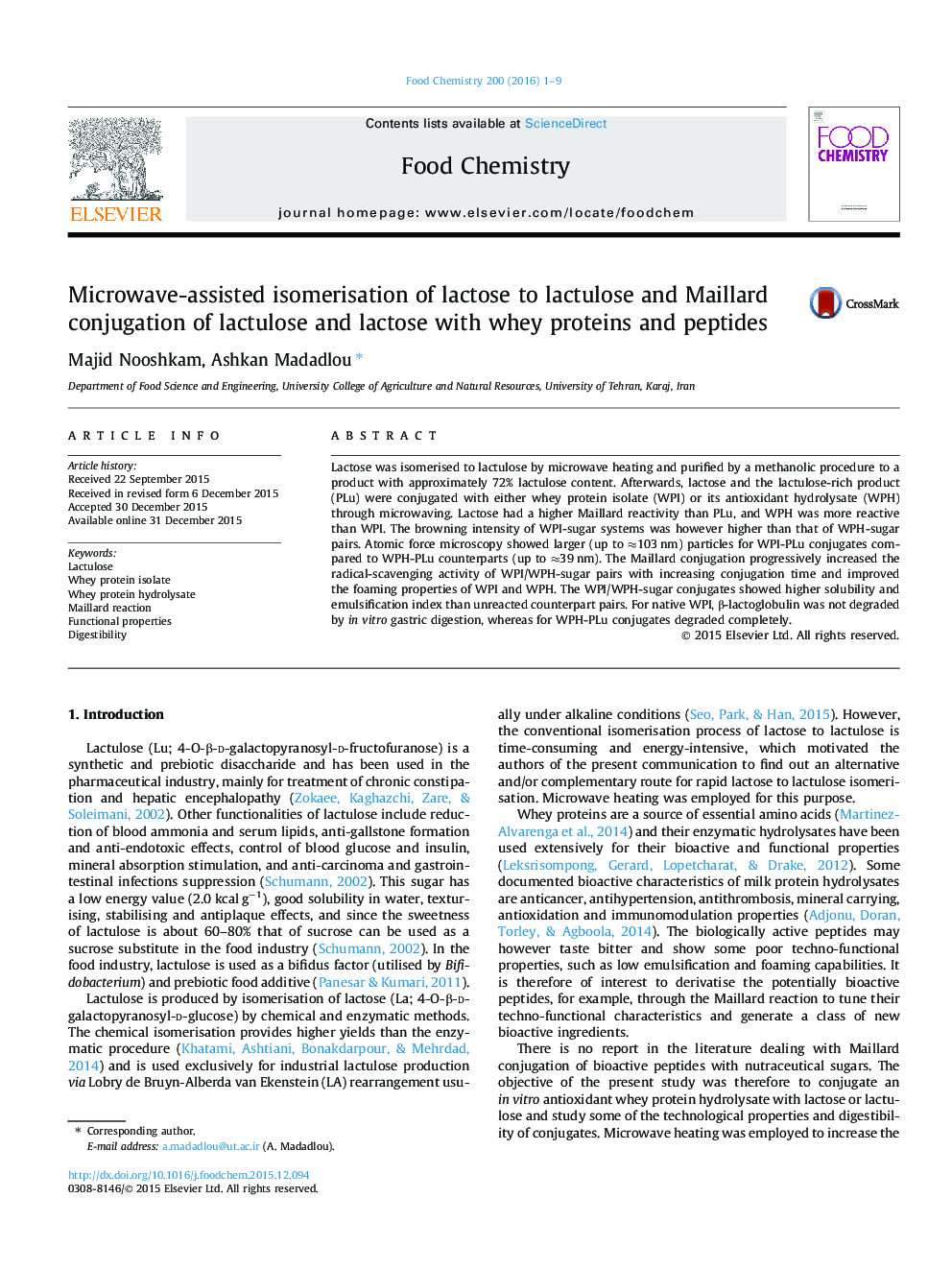| Article ID | Journal | Published Year | Pages | File Type |
|---|---|---|---|---|
| 1184067 | Food Chemistry | 2016 | 9 Pages |
•Lactose was isomerised to lactulose and protein (WPI) was hydrolysed to WPH.•WPI and WPH were glycated with lactose and lactulose by microwave heating.•Lactose and WPH were more reactive than lactulose and WPI.•WPI-lactulose conjugate particles were greater than WPH-lactulose counterparts.•Conjugation with sugars increased the emulsification and solubility of WPI and WPH.
Lactose was isomerised to lactulose by microwave heating and purified by a methanolic procedure to a product with approximately 72% lactulose content. Afterwards, lactose and the lactulose-rich product (PLu) were conjugated with either whey protein isolate (WPI) or its antioxidant hydrolysate (WPH) through microwaving. Lactose had a higher Maillard reactivity than PLu, and WPH was more reactive than WPI. The browning intensity of WPI-sugar systems was however higher than that of WPH-sugar pairs. Atomic force microscopy showed larger (up to ≈103 nm) particles for WPI-PLu conjugates compared to WPH-PLu counterparts (up to ≈39 nm). The Maillard conjugation progressively increased the radical-scavenging activity of WPI/WPH-sugar pairs with increasing conjugation time and improved the foaming properties of WPI and WPH. The WPI/WPH-sugar conjugates showed higher solubility and emulsification index than unreacted counterpart pairs. For native WPI, β-lactoglobulin was not degraded by in vitro gastric digestion, whereas for WPH-PLu conjugates degraded completely.
